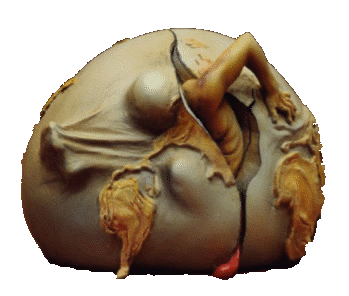
 |
Emergence
|
| home | archive material |invited participants | schedule | Showcase Conference |
|
Organising/advisory committee: PW Anderson J Beatty D Howard S Savitt GA Sawatzky PCE Stamp R Wald |
The Pacific Institute of Theoretical Physics (PITP) organized a workshop on ‘Emergence’, to run from 15-18 May 2005. This topic has been addressed by researchers in biology, chemistry and physics, with a long and tangled history of ideas. Some of the central questions are (i) Given that ALL Hamiltonians used in physics are ‘effective’ ones, valid only in a restricted energy range and in a restricted Hilbert space, how can ‘reductionist’ ideas be demonstrated at all? If not, then are we at liberty to construct theories at different ‘levels’ based on ‘emergent quantities’ (order parameters, etc.) having no clear connection to the entities in theories at ‘lower level’ (so-called ‘microscopic’ entities)? (ii) What kind of quantities (order parameters, fields, potentials, etc.) are appropriate to the discussion of emergent properties? What is the role of topology (eg., in the ‘quantum protection’ of relations like the Josephson relation, or in scenarios in ‘topobiology’). How can we deal with systems far from equilibrium, where it is not obvious how to define order parameters or anything like them, or even an effective Hamiltonian? Since most interesting emergent properties in biology rely on departures from equilibrium, this is a crucial question. (iii) What about the emergence of classical (relativistic) spacetime, from, eg., a ‘decoherence functional’ in some theory of quantum gravity (or in a future string theory)? In what way are the properties of living things dependent on (i) properties of our present universe (including the cosmological arrow of time, the cosmological constant, etc.) and in what way, if any, has quantum mechanics entered into the evolution of life? Given the apparently extraordinarily unlikely state of the present universe in most theories, does a resort to ‘anthropic’ arguments make any sense? (iv) What more (if anything) is required in a theory of non-equilibrium physics to understand the formation of local regions of high negentropy, self-organisation processes, and biological software and hardware? Is the computer science notion of ‘depth’ relevant or necessary here? What more is necessary to decide between the various existing scenarios for the origin of life on earth (hardware and software)? (v) Recent work in condensed matter physics and string theory indicates that at least in some systems, the phenomenon of "UV/IR mixing" may take place, calling into question the standard ideas of renormalization (so that reductionist ideas may lead back to the macroscopic world, rather than inevitably to the high-energy microscopic world of particles). Is this true? If so, does it have any relevance to biology? The emergence conference brought together a selection of biologists, physicists, and some physical chemists, along with several philosophers of science and biology, who are interested in these questions. In keeping with simpler previous workshops organized in this area, where the emphasis was on extended discussion, the number of talks was restricted so as to allow for extended discussion between participants. There will also be an opportunity, for those who wish, to publish papers in a special issue of History and Philosophy of Science (edited in Utrecht). This will also include some papers from a previous PITP workshop--see http://pitp.physics.ubc.ca/archives/CWSS/arrow/ for some of these presentations. For any questions on this, please contact the organizers, or else contact PITP directly (see above). |